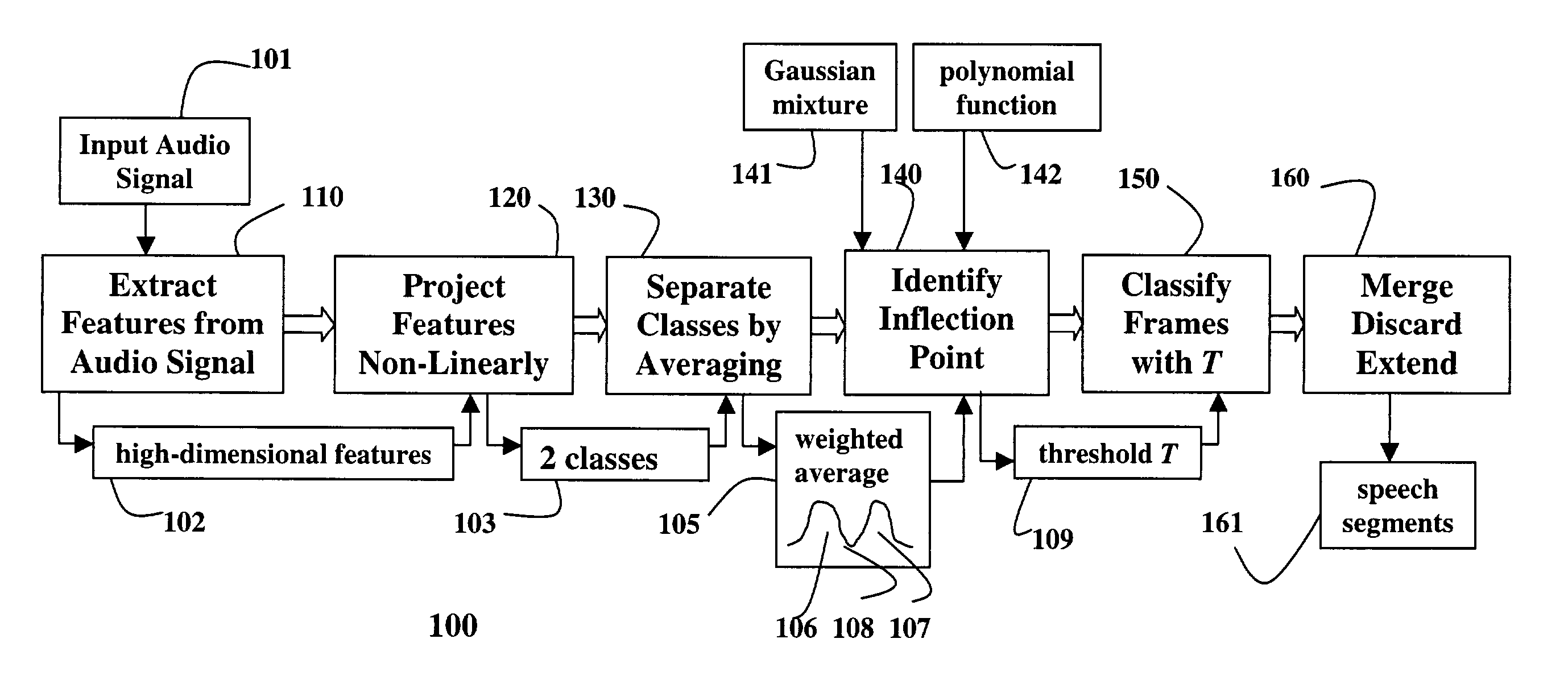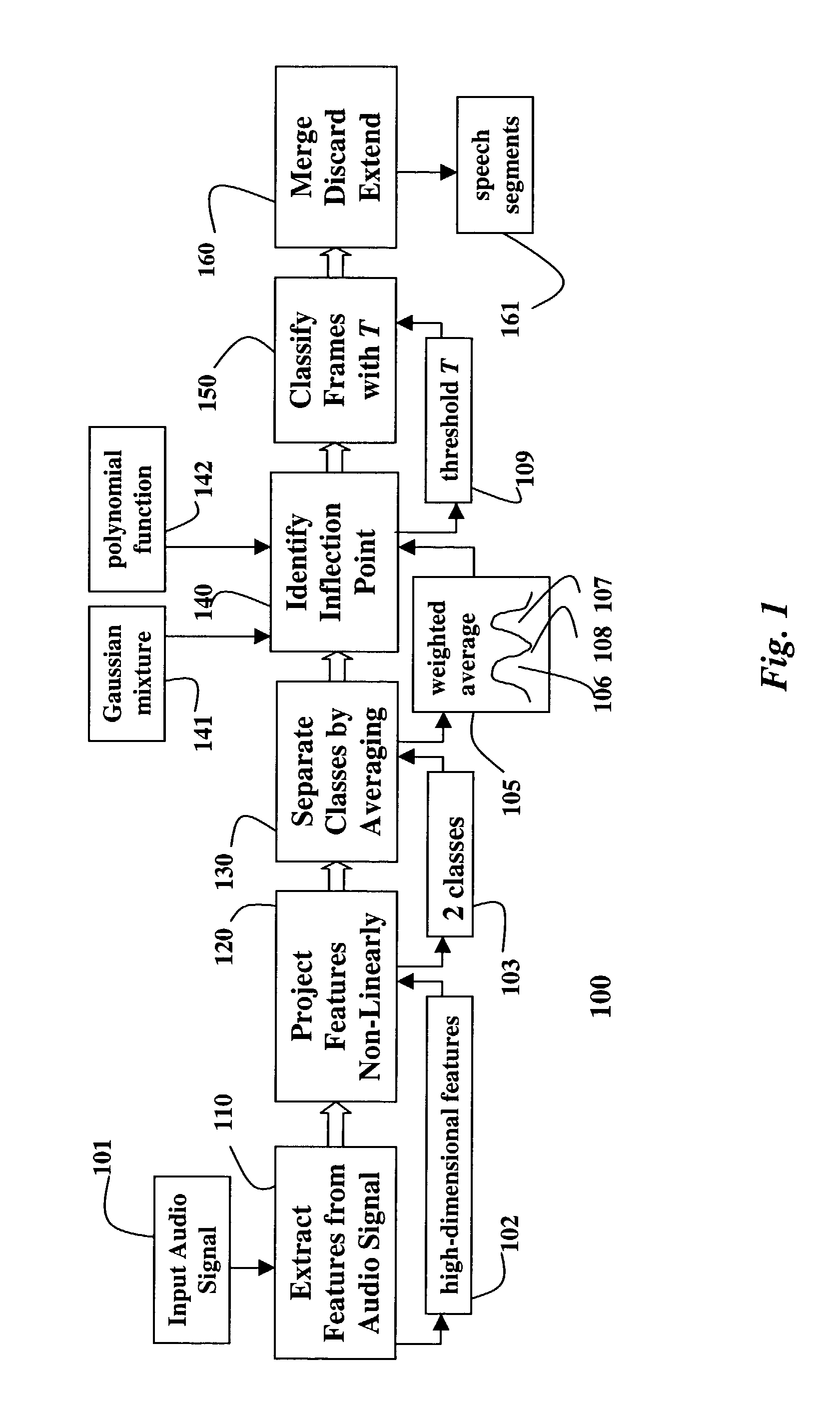Classifier-based non-linear projection for continuous speech segmentation
a continuous speech and segmentation technology, applied in the field of speech recognition, can solve the problems of spurious speech recognition, difficult to clearly distinguish whether a given segment is given, and methods that are not well-suited for real-time implementation, and achieve the effect of prolonging speech segments
- Summary
- Abstract
- Description
- Claims
- Application Information
AI Technical Summary
Benefits of technology
Problems solved by technology
Method used
Image
Examples
Embodiment Construction
[0023]FIG. 1 shows a classifier-based method 100 for speech segmentation or end-pointing. The method is based on non-linear likelihood projections derived from a Bayesian classifier. In the present method, high-dimensional features 102 are first extracted 110 from a continuous input audio signal 101. The high-dimensional features are projected non-linearly 120 onto a two-dimensional space 103 using class distributions.
[0024]In this two-dimensional space, the separation between two classes 103 is further increased by an averaging operation 130. Rather than adapting classifier distributions, the present method continuously updates an estimate of an optimal classification boundary, a threshold T 109, in this two-dimensional space. The method performs well on audio signals recorded under extremely diverse acoustic conditions, and is highly effective in noisy environments, resulting in minimal loss of recognition accuracy when compared with manual segmentation.
Speech Segmentation Feature...
PUM
 Login to View More
Login to View More Abstract
Description
Claims
Application Information
 Login to View More
Login to View More - R&D
- Intellectual Property
- Life Sciences
- Materials
- Tech Scout
- Unparalleled Data Quality
- Higher Quality Content
- 60% Fewer Hallucinations
Browse by: Latest US Patents, China's latest patents, Technical Efficacy Thesaurus, Application Domain, Technology Topic, Popular Technical Reports.
© 2025 PatSnap. All rights reserved.Legal|Privacy policy|Modern Slavery Act Transparency Statement|Sitemap|About US| Contact US: help@patsnap.com



